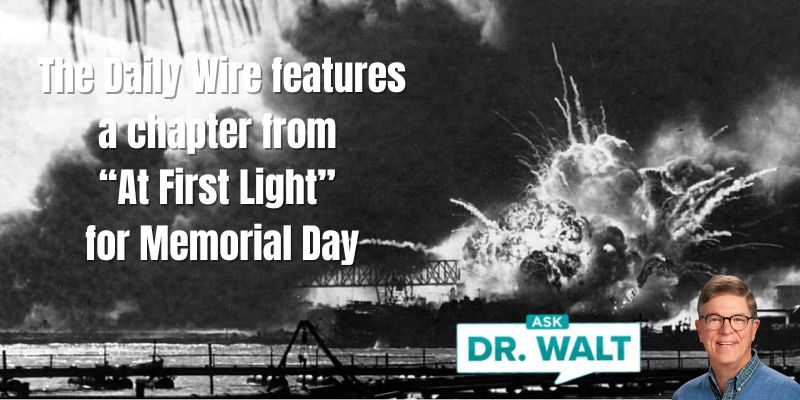
March 17, 1944 – Dad’s first medal of valor caused Mount Vesuvius to blow her top
March 17, 2024
March 19, 1944 – Not a single spot on Anzio Beachhead is safe from enemy gunfire
March 19, 2024March 18, 1944 – To seize a beachhead like Anzio was one thing—to hold it indefinitely was another

Triple-concertina and barbed wire entanglements enmeshed all infantry positions while bridges in our control were kept prepared for demolition at all times. Road craters were used extensively as antitank measures and on one occasion an enemy SP gun, stopped at a crater, was knocked out by AT fire and a Mark IV tank which tried to by-pass it suffered the same fate. Varied antiparachutist defenses dotted our rear areas.[1]
Daylight movements were held to a minimum, due to excellent enemy observation. Messenger runs, except in emergency, were invariably made under cover of darkness. Despite this handicap more than 22,000 runs were made during the month by the operations platoon of the 3rd Signal Company. More than 400 miles of wire circuits were maintained, and much of the wire was placed under ground, especially in the forward areas.[2]
The 3d Division learned that to seize a beachhead was one thing—to hold it indefinitely was another.[3]
Company L of Dad’s 3rd Battalion (30th Infantry Regiment, 3rd Infantry Division) sustained 18 casualties, including 2 officers wounded, during this bitter, all-night action. [4]
After this episode, Company L and the remainder of the 3rd Battalion began outposting all houses in the area to prevent enemy infiltration from the north. The battalion then began to improve positions with barbed wire and hasty minefields—laid by the A&P[5] platoon under 2nd Lt. Philip B. Larimore—and placed guns at strategic points to defend against possible counterattack.[6]
[1] Taggart, 140, 142.
[2] Taggart, 142.
[3] Taggart, 142.
[4] Prohme, 147.
[5] A platoon of the Ammunition Pioneer Battalion. An Ammunition & Pioneer Platoon had 1 Officer and 26 men. http://www.bayonetstrength.150m.com/UnitedStates/Infantry/united_states_infantry_battalion%20mid%201943%20to%201945.htm
[6] Prohme, 147.
[7] The standard double-apron fence is one of the best obstacles that can be made with barbed tape. The effectiveness of this obstacle is increased by (1) raising the top wire to preclude crossing the obstacle by stepping over it and (2) placing low wires 4 inches above the ground to prevent personnel from crawling under the obstacle. http://www.tpub.com/seabee/4-38.htm
[8] The barbed wire employed took two forms: Concertina and Double Apron. Concertina wire was constructed from large (approximately 4ft) coils of the then modern, strong and stiff ‘Dannert’ wire which were opened up to form the characteristic concertina-like shape. These were then erected in the form of a pyramid with two coils below and one on top. The coils were then connected with wire and the whole structure secured to wooden posts or metal pickets
Double Apron took longer to construct but was thought by the military to be one of the best types of barbed wire entanglements because it was difficult to cut, climb over or destroy by artillery fire. It consisted of three horizontal wires fixed to pickets (vertical supports) with sloping wires (diagonals) leading from the top of the upright pickets to the anchorage pickets. Three further horizontals were fixed to these diagonals. These horizontals, together with the diagonals, were called ‘front and rear aprons’. When combined with concertina, barbed wire would present a very effective obstruction. http://www.walberswickww2.co.uk/barbed-wire/.
[9] Prohme, 147-148.
In case you haven’t read or listened to Dad’s book, you can learn more or order it here.
© Copyright WLL, INC. 2024.




